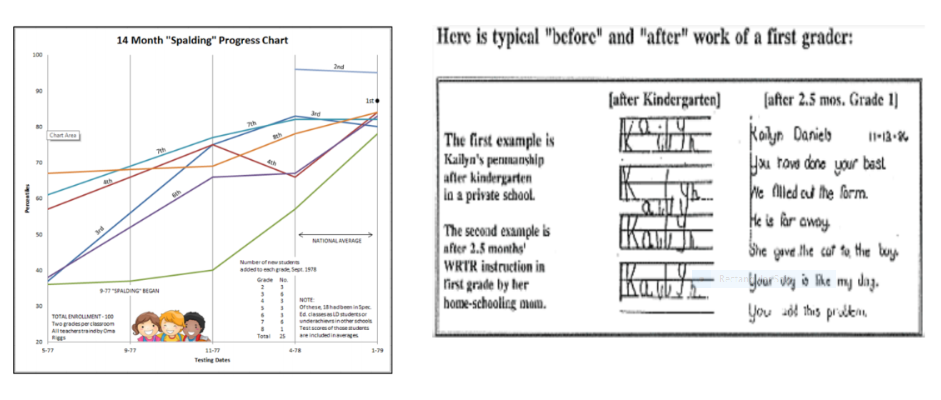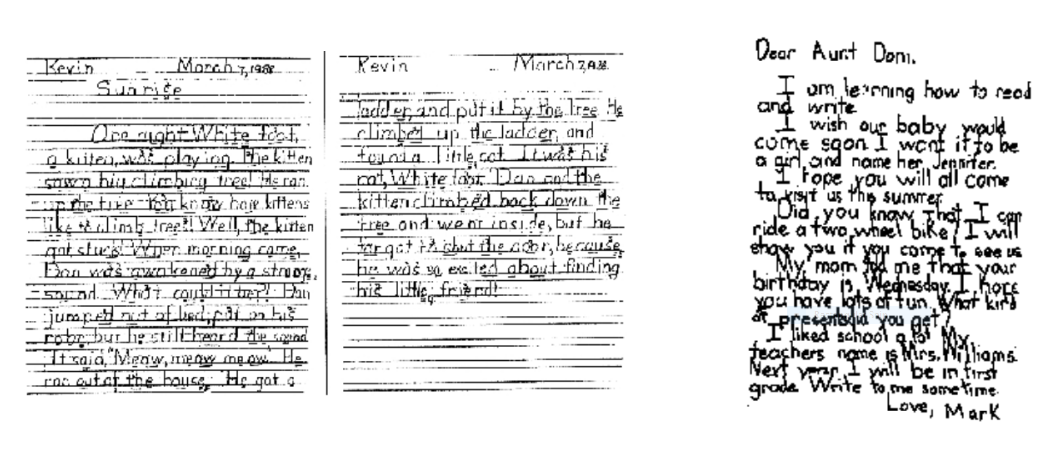Philosophy – Student Expectation
Student Expectation
Content and Methods of Instruction Make the Difference
The Writing & Spelling Road to Reading & Thinking presents a practical, step-by-step, full language
arts instruction which integrates all the language arts “strands”.
• LISTENING, SPEAKING, INITIAL LETTER FORMATION & PENMANSHIP
• “EXPLICIT” PHONETICS
• CORRECT SPELLING WITH 47 RULES OF SPELLING, PLURALS & SYLLABICATION
• COMPOSITION, READING & COMPREHENSION
• VOCABULARY DEVELOPMENT
• GRAMMAR & SYNTAX
• ANALYTICAL & INFERENTIAL THINKING
• COGNITIVE DEVELOPMENT IN THE AUDITORY, VISUAL, VERBAL AND MOTOR AREAS OF THE BRAIN
How quickly can young students learn? At what ages? How much can they learn? What is developmentally appropriate practice for the young? Do they need teacher directed instruction and practice, or to be encouraged to wander about a classroom from one workstation to another to “discover” all they need to know about written language, which would then permit them to pursue any area of study?
We believe that the first step is to set clear language goals and then to help children achieve them. Our goal in early English instruction is to enable beginning students to turn their comprehensible, oral vocabularies (between 4,000 and 24,000 words according to researchers Chall, Seashore and Flesch) into print as quickly as possible. This, in turn, enables them to read and write at their interest levels.
We begin by teaching 71 correct spelling patterns to match the 45 “Elementary” sounds of speech. They, and all else in this method, are taught concurrently with letter formation through dictated instructions. Using brain-based, multi-sensory and direct instruction to fairly accommodate all
learning styles, we have proven empirically that virtually all first graders can learn this phonetic code (the alphabetic principle) in a few weeks. The methodologies, content and finely sequenced lesson plans of this method unite to produce acceleration in learning, excellence, and the prevention and
correction of cognitive skill-based disorders with all students of varying abilities, which the following graphic examples will show.
Dr. Samuel T. Orton, beginning his research in 1923, worked with teachers who were regularly taught this complete orthographic phonics in the 1920’s and before. One of Orton’s protégés, Romalda Spalding, discovered only one student in her entire career she considered truly dyslexic. Oma Riggs,
this author’s mentor, never found even one she couldn’t teach at least to grade level. Dr. Hilde L. Mosse, head psychiatrist in the New York City school system in the 1960’s and 1970’s used these techniques to teach 1000 of her learning-disabled and psychologically disturbed student patients to read and write. The encyclopedic testimony of her experience and research is in her 714-page The Complete Handbook of Children’s Reading Disorders. The decades of experience of the Riggs Institute reflects the same results. There is no “scientific controlled research” demanded by the federal and state legislation because there have not yet been any “control groups.” [Research Yes or No] Because we are against publisher-financed research we remain hopeful that future neuroscientists, educational psychologists and linguists, who already possess federal and foundation research dollars, might be interested to correct this oversight. Our curriculum and teacher training practices reflect nearly 120 years of collective research and practical experience. The empirical evidence of its efficacy is overwhelming. But first we must have the very high expectations that the teachers of these students had.


© Riggs Institute
